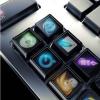More SED delays - Judge rules in favor of Nano Proprietary
 A Texan judge ruled in a summary judgment that Canon did indeed violate the terms of the technology licensing agreement with Nano-Proprietary by bringing Toshiba in as a partner in SED manufacturing. The court has yet to determine what damage this has caused, but at this point a monetary fine may not be the worst of what Canon will undergo in continuing in SED production.
A Texan judge ruled in a summary judgment that Canon did indeed violate the terms of the technology licensing agreement with Nano-Proprietary by bringing Toshiba in as a partner in SED manufacturing. The court has yet to determine what damage this has caused, but at this point a monetary fine may not be the worst of what Canon will undergo in continuing in SED production.
Unless Canon is successful in appealing the judgment, the company will have to renegotiate a new licensing agreement for Nano-Proprietary's technology if it is going to continue with plans to produce SED displays. With Canon now on the defensive it remains to be seen how aggressively Nano-Proprietary will leverage its apparent legal advantage. Regardless, the recent ruling will likely lead Canon to pause its plans for SED manufacturing yet again.













